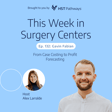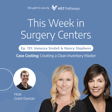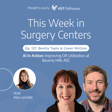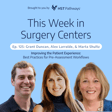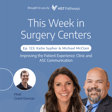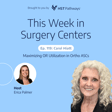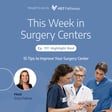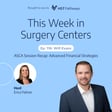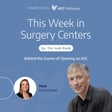
Who's on Your Schedule? Exploring Demographic Data for ASCs
This week, Will Evans, Head of Data Science & Insights at HST Pathways, joins us to unpack our new five-and-a-half-year look at how case volume, OR minutes, and dollars are distributed across patient demographics. We discuss the biggest findings, a few surprises, and the simple metrics any ASC can track to anticipate scheduling and staffing nuance by population.
In our news segment, we cover venture fundraising in the ASC industry, a recent survey report showing a growing number of health systems making ASCs a core part of their strategy, how cyberattacks have disrupted patient care at hundreds of healthcare organizations this year, and a new FDA-cleared blood test to aid in initial Alzheimer’s assessments.
Resources mentioned:
Report: Who’s on Your Schedule? Demographic Trends & Benchmarks for ASCs
Oath Surgical Raises $24M to Expand Surgeon-Led Centers, Develop AI Platform
Health systems expand ambulatory strategies: Report
In 2025, patients are in the healthcare cybersecurity crosshairs
Roche, Lilly's blood test for Alzheimer's diagnosis gets US approval
Brought to you by HST Pathways.

